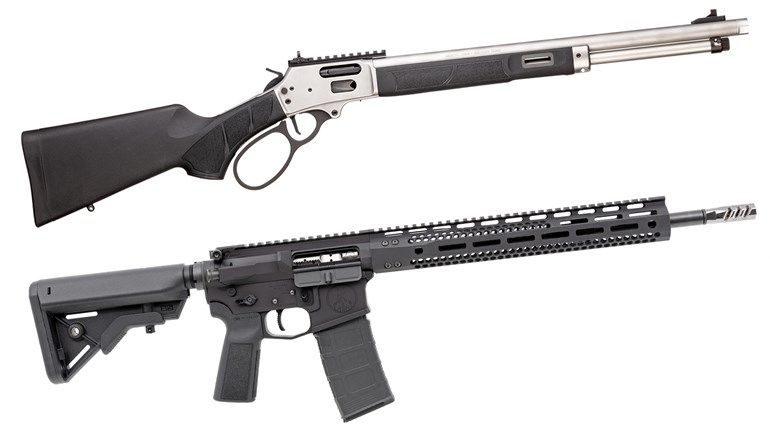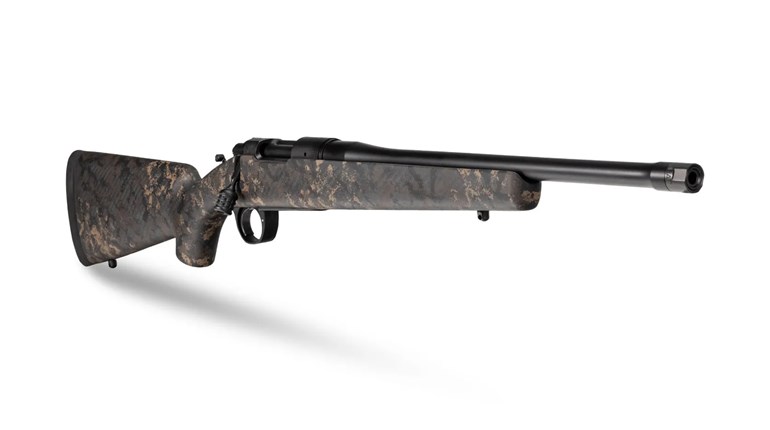Most serious, extreme-weather hunters today use a synthetic or laminated wood stock on their hunting rifles. If you are old school and still use wood, you must seal it against moisture. Most modern rifles have a waterproof finish, but the manufacturers often cut corners and leave some areas unprotected.
Remove the stock and remove the butt plate or recoil pad and grip cap. Use a good grade of polyurethane and thin it according to the instructions on the can. Coat all the unfinished surfaces evenly with a thin coat. The wood should absorb the thinned polyurethane. Allow it to dry and apply another coat. Continue until it is no longer absorbed. Finish with one coat of uncut polyurethane in the areas that have a critical tolerance, such as where the action is bedded. The barrel channel and butt end where tolerances are less critical can get another coat or two. Make sure you have sealed every exposed wood surface. If water can't reach the wood, it can't be absorbed.
Extreme cold presents another set of problems that must be dealt with in the shop before the hunting season. Cold can cause oil or grease in the bolt or trigger to gel and prevent the gun from firing. Any rifle you will be using in cold weather should be completely degreased and re-lubricated with a product designed for use in extreme cold.
Disassemble the bolt and action as far as you are comfortable. Spray everything with a degreaser like Outer's Crud Cutter, or even CRC Brakleen from the auto store. (Make sure you protect the scope from the spray.) Work outdoors and with safety goggles, rubber gloves and a painting mask. Hold the parts over a bucket to collect the liquid for proper disposal. Let the liquid run off so that it flushes away the grease. Work at stubborn deposits with an old toothbrush saturated with the degreaser. Direct the spray into all the little nooks and crannies until you have all the parts clean and free of any buildup. Spray into every hole and opening.
Also use the degreasing spray to clean the action of the rifle, including the bolt lug raceways. Do not attempt to take your trigger apart, but instead spray the trigger assembly from every possible angle and direct the spray into every hole and opening.
After it dries, the metal is chemically clean and it is subject to rusting very quickly, so you must coat every surface with something to protect the metal.
Anything you are using on moving parts must maintain viscosity in cold weather. Make absolutely sure that the manufacturer guarantees it for use in extreme cold. If it doesn't say it works in sub-zero temperatures, don't use it. When in doubt, spray some into a Dixie cup and leave it overnight in your freezer. Most freezers are about 0 degrees Fahrenheit, so if it's still liquid in the morning it's probably fine.
The old standby for uber-extreme cold is powdered graphite, which works fine for lubrication but provides little rust protection. I much prefer one of the modern chemical products like Outer's Tri-Lube.
Another approach is to use the cold-weather lubrication on the moving parts and coat the metal parts with paste wax, which protects against rusting and will last longer than most chemical barriers.
Wipe out the chamber and bore with a lubricated patch, followed by a dry patch to leave a microscopic coating. I usually fire a fouling shot, and then tape over the muzzle with electrician's tape stretched tight to prevent water from entering.
You must avoid any buildup in the trigger, but the metal must be protected. I like to spray with a very light-viscosity lube and then blow it out with high pressure shop air so that only a fine coating is left. An old gunsmith trick is to flush the trigger with lighter fluid and let it dry, leaving behind a light coating.
Ice buildup can also be a problem. Do not leave the gun in the truck or outside at night. Bring it inside (unloaded of course) and stand it near a heat source to completely dry. It's a good idea to wipe down any exposed metal with a rag impregnated with the protector after the gun is dry. If it's been stormy, it's not a bad idea to take the gun apart and wipe down all the metal every few days. But this can affect your zero, so you should fire a confirming shot at a target before hunting.
At the end of the season, take the gun apart and clean and reapply the protection before storing it until next hunting season.


































